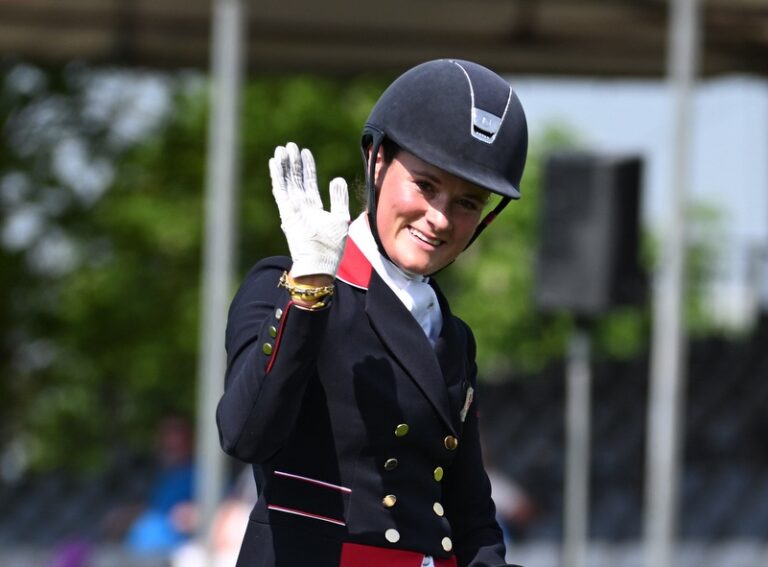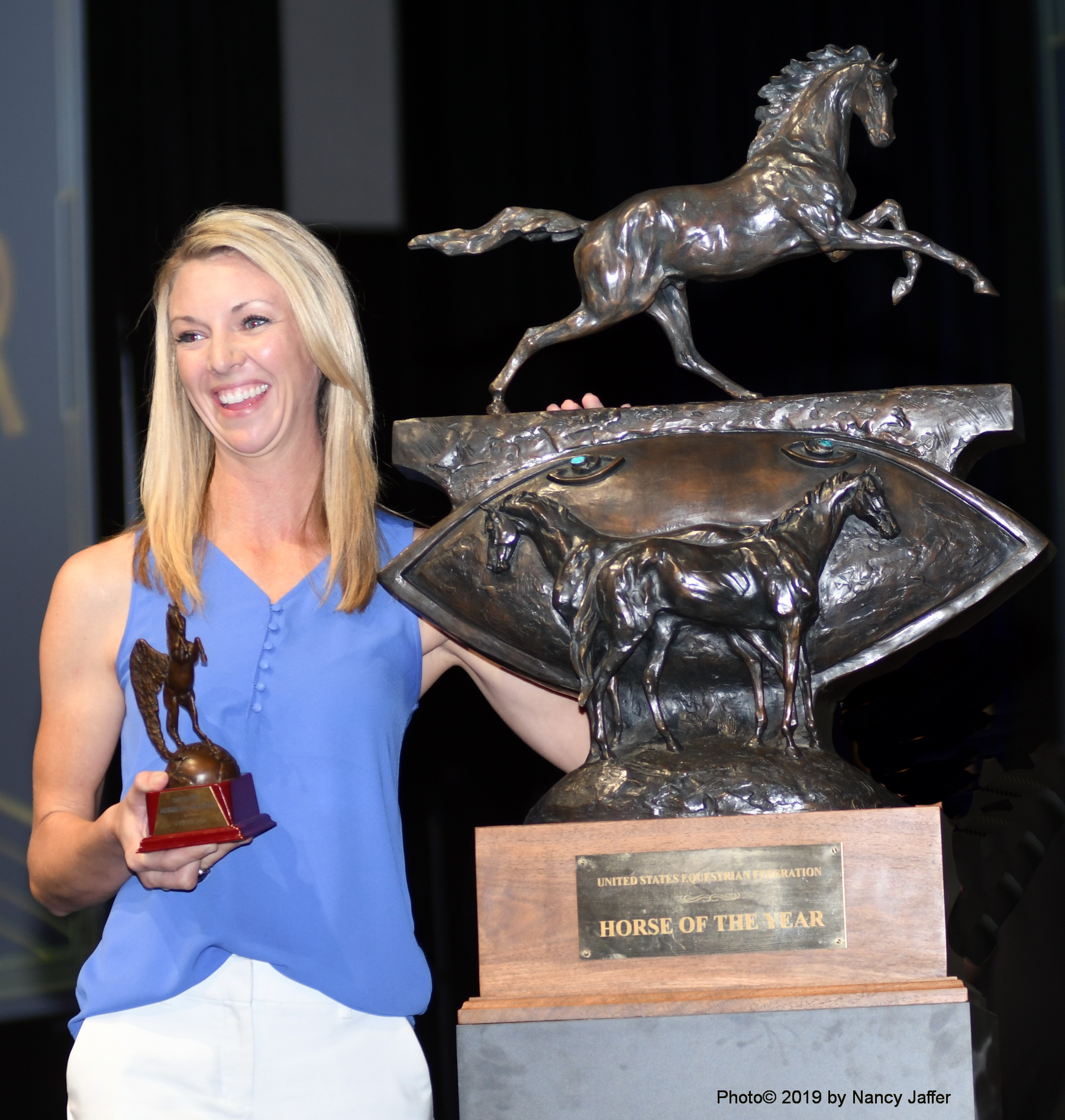
Whatever else happened at the U.S. Equestrian Federation’s annual meeting in West Palm Beach, Florida, this year’s edition will be remembered most for the bouquet of honors collected by Laura Graves. The only American dressage rider ever ranked number one in the world not only took the Equestrian of the Year title, but she also picked up another trophy for her Verdades, the International Horse of the Year she has brought along since he was a weanling.
Graves started her season by winning the Grand Prix at the Adequan Global Dressage Festival, about a half-hour’s drive to the west of the convention hotel. Between awards dinners, she returned to the showgrounds to take the Grand Prix Freestyle title with a mark of 83.22 percent. But her biggest challenge turned out to be finding something fresh to say for each of her acceptance speeches.
Graves told her appreciative audience last evening that the reality of her experience turned out to be even better than her dreams.
“It wasn’t about the ribbons and the medals and the scores,” she said.
“In fact, it wasn’t even about the moment the Olympic medal was placed around my neck. It was about the joy. Despite hardships, heartbreaks, massive life failures; always overwhelming joy. And not just the kind of selfish joy this horse brought to my life, but the fact that this great horse brings joy to so many people. So it’s Verdades tonight that we really have to say `thank you’ to. It’s been my pleasure to share him with the world.”
While Graves basked in the spotlight, serious work was going on during four days of meetings that ended yesterday. Surprise! The grassroots got a lot of attention. I say “surprise,” because the convention usually focuses on rules, rules, rules and issues relating to the high end of the sport. But the realization has dawned that equestrian needs growth in the lower and middle levels to remain viable.
USEF’s predecessor organizations, the American Horse Shows Association and USA Equestrian, traditionally held conventions that were snoozefests, unless there was a hot topic—drugs, for instance—or some fun field trips. Visiting the Budweiser Clydesdales several decades ago when the convention was in St. Louis comes to mind. A lot of business was done in the bar.
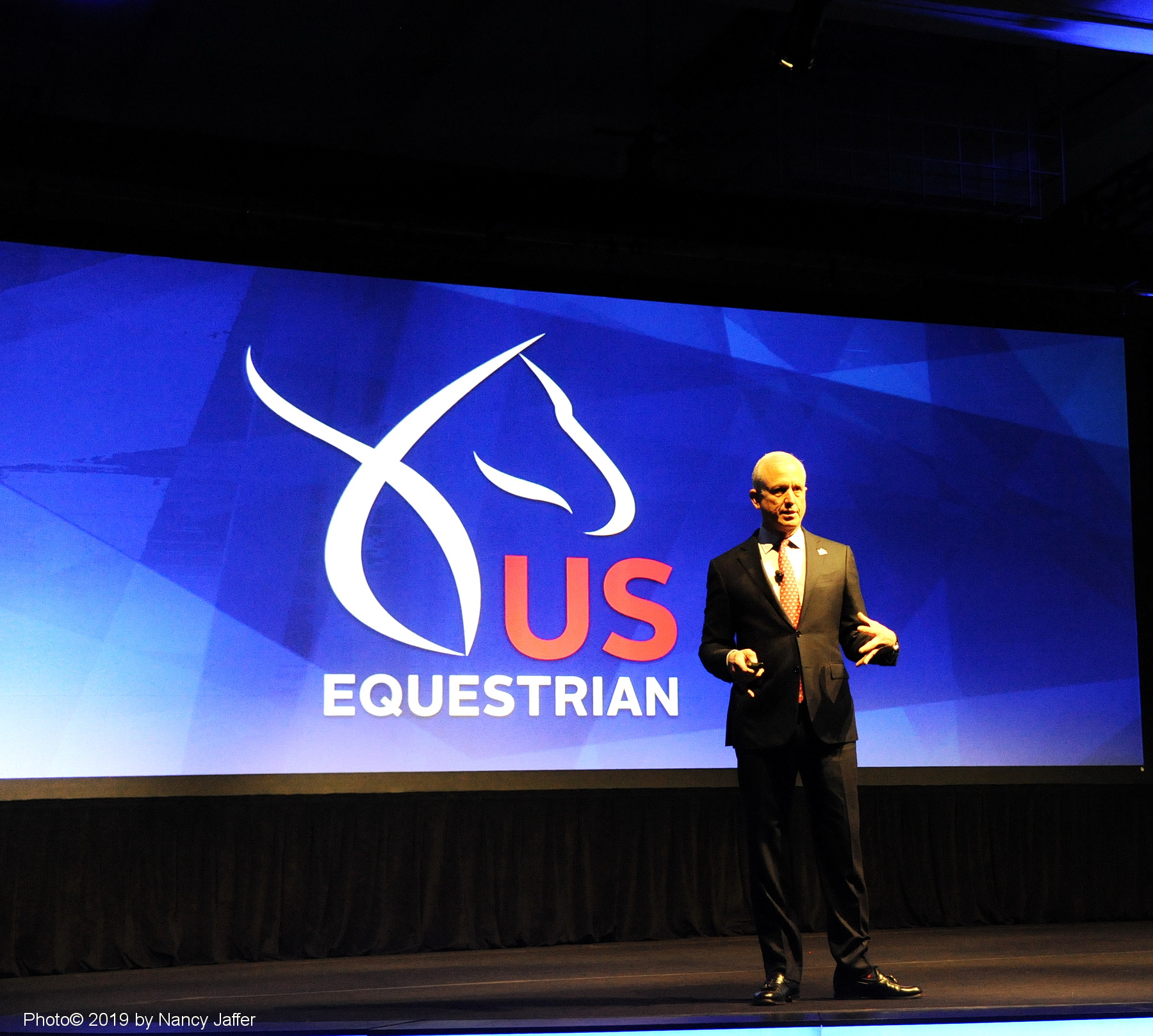
The inception of a wide-ranging strategic plan and corporate executive Murray Kessler’s installation as president two years ago really woke up the organization and continued its evolution, infusing it and the annual meeting with new energy boosted by cutting-edge media, and a dedicated staff that works as a team.
So there actually was a session devoted to the subject of growing the grass roots (it was allocated an hour, but should have been longer), where a point was made that while a majority of members are grassroots, only a small percentage feel their needs are being served by their equestrian organizations.
USEF CEO Bill Moroney noted some competitors don’t feel at home in the culture of the modern show world, while for others, cost is a major factor in where they compete.
“We need to create affordable and accessible on-ramps,” said Moroney. That’s being done in several ways, including USEF Lite (formerly Competition Lite) for some breeds and disciplines. More than 80 competitions that never were part of USEF have become affiliated. A “reduced barrier cost” enabling exhibitors to ride in these shows without being USEF members also permits the competitions to run without fulfilling some USEF requirements (such as having a farrier on the grounds) to provide a gateway that may inspire some to move up to the next levels of competition.
The U.S. Hunter Jumper Association, meanwhile, attracts grassroots with outreach programs that can be a “show within a show” for those getting started in the sport.
Despite improvements, “it’s just not good enough on the grassroots level yet,” Kessler said, noting USEF will continue to focus on this area. One gauge of the USEF mindset involves replacing the Administration and Finance Council with the new Member Services Council, geared to meeting the needs of those who join.
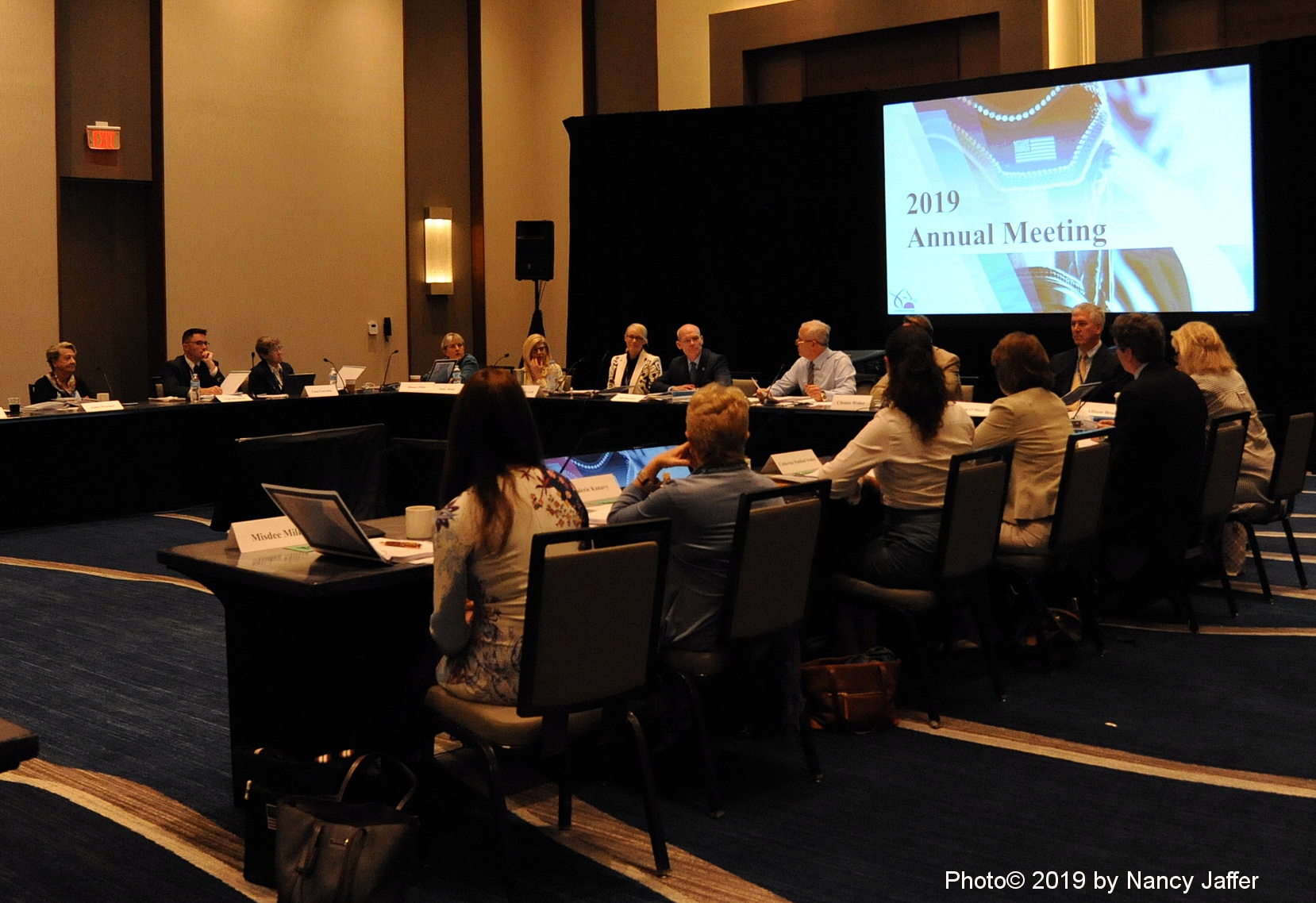
Free fan memberships have helped boost the reach of the federation, which had been stagnant for a few years in the 80,000-member range and now has 145,000 people on its rolls. Bigger numbers, even including those who don’t pay full membership price, make USEF more attractive to sponsors who can fund the organization’s programs.
Small breeders, who also can be considered grassroots, have had difficulty gaining a foothold selling their horses in this country for a variety of reasons. Mary O’Connor, president of the U.S. Sport Horse Breeders Association, spoke during the meeting about the challenges face by her membership. Hear what she has to say by clicking on this video.
A two-hour session on equine transactions highlighted production of a new booklet that is a guide to buying and selling horses, one of the areas where the industry’s reputation is at risk. Efforts over recent years to include a requirement for a bill of sale in USEF rules never came to fruition, but this is an alternative route that enables people to navigate a tricky part of the process. USEF Vice President Elisabeth Goth, who spearheaded the effort, talks about it in this video.
There was a breakthrough during the convention in the often-difficult relationship between the affiliates representing national breeds and disciplines (think Morgans, Arabians, western dressage, saddle horses, hunters, etc.) and USEF, which some see as focused on international/high performance matters.
“I thought both the willingness of the affiliate leadership to work together and the willingness of the USEF to improve the affiliate relationship, which includes giving the affiliates a greater voice, were very positive developments,” said David Mount, president of the American Saddlebred Horse Association.
Kessler explained how important it is for USEF to retain the affiliates and serve a broad spectrum of horse sports.
“I get people all the time saying, `Why don’t you just focus on the Olympic discipline?’ he reported.
“But when issues happen or horse abuse happens in another area, then it has an impact on the entire industry. From our perspective, we would rather provide good governance and partner with the broadest group possible in horse sports so that it remains healthy in the U.S. and continues to grow.”
In other matters:
- The board passed a rule developed during the U.S. Hunter Jumper Association meeting last month that all Premier-rated hunter shows and Level 5 or above jumper shows must have a paramedic as one of the required medical personnel. This rule, which goes into effect Dec. 1, is considered a first step toward ensuring proper medical equipment and personnel are available in case of emergency.
- Also approved was a complete re-write of the way the federation handles its procedures for licensing shows, to improve the competition environment and provide “viable competitions” to meet the needs of the sport within a geographic area.
- A new headquarters for USEF, being built at the Kentucky Horse Park in Lexington, will represent a savings of $300,000 annually over the current building at that venue.
- An agreement is in process with the University of Kentucky to handle drug testing for USEF, which currently has its own lab. Working with UK will give USEF an “arm’s length” distance from a process that some had seen as a conflict of interest when conducted by the organization that handles hearings for violators.
- An effort to make Premier hunter shows really premier got a boost from defining requirements for different ratings as a first step to “provide a consistent experience for exhibitors.”
- The board voted to ban Segways, hoverboards, scooters and similar types of motorized vehicles from barns, horse paths and spectator areas, among other locations.
- A much-debated rule about unsafe use of electronic devices, including cell phones—as determined by a steward—will be prohibited while mounted in schooling areas and while longeing horses on competition grounds. There had been complaints that people distracted by the devices presented a danger to others.
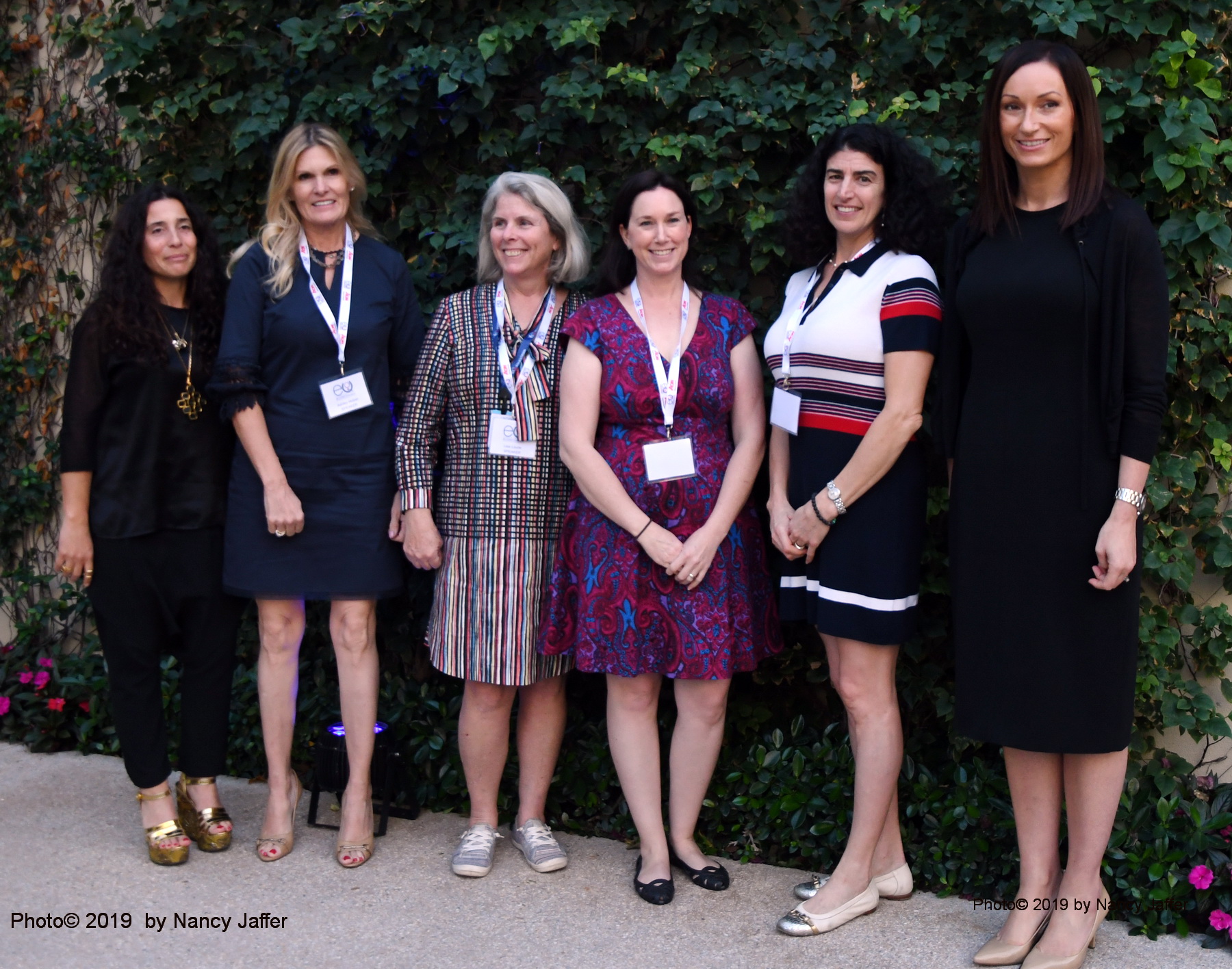
- The new Equestrian Businesswomen organization, a brainchild of public relations guru Jennifer Wood, held a wildly successful summit at the convention center next door to the annual meeting’s hotel, and also staged a panel during the USEF gathering. It was a great networking opportunity, where inspirational stories were shared about the many ways to achieve success in the industry.

- National Horse of the Year honors went to Cobra, a mustang once deemed unadoptable after being rounded up from the wild as a 6-year-old. He became a star in western and English dressage under the guidance of owner Marsha Hartford-Sapp.







